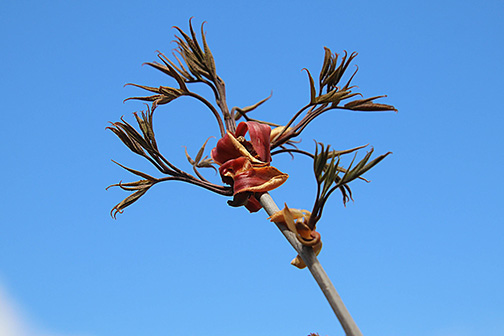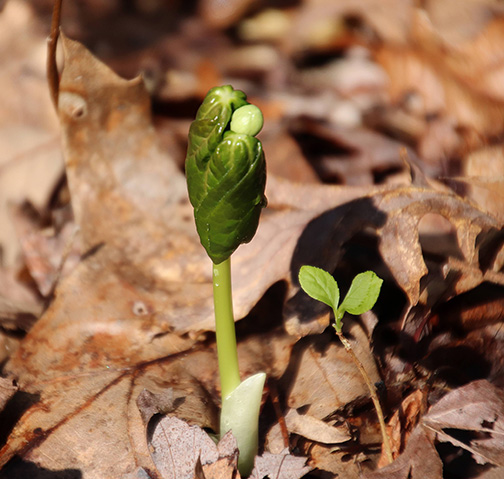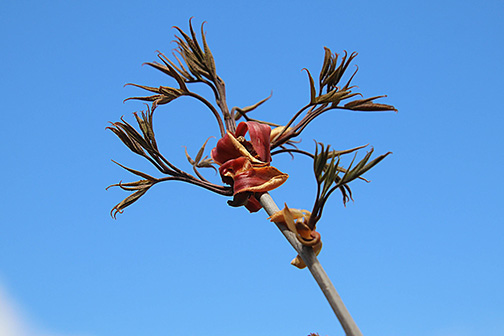Happy Mystery Monday! Can you guess what is pictured in the photo below:

The answer to last week’s mystery is mayapple or wild mandrake, Podophyllum peltatum, pictured in the photo below:

Mayapples first emerge in April. They frequent mesic to dry-mesic upland forests, well-drained floodplain forests, and various moist, disturbed habitats. Mayapples populate much of Adkins’ Blockston Branch Walk.
As mayapple leaves first emerge in Spring, the leaf blades initially droop downward, then later open flat (like an umbrella) to catch some rays as the tree canopy closes in and blocks much of the sunlight.
Mayapples colonize by rhizomes, forming dense mats. Each year, the rhizome elongates about 6-20 cm in length, terminating in a bud for the subsequent year’s leafy stem. One or more buds form for continuation and branching of the rhizome. Over time rhizome branching results in the formation of large reaching colonies.
Mayapples are unique in that they only have two leaves and a single flower. Nonflowering mayapple stems bear a single leaf. These are young, immature sprouts whereas flowering stems produce a pair of leaves, between which is a single flower. The flowers are capable of self- or cross-pollination.
Be aware, aside from the ripe fruits, all parts of the mayapple are toxic.
Mystery Monday is sponsored by the Spy Newspapers and Adkins Arboretum.



Sandy Sears says
This very nice article doesn’t mention the interesting fact that box turtles love to eat mayapple seeds. Apparently the seeds that pass through the turtle’s digestive tract are much more likely to germinate. We can be grateful to these creatures for helping to spread mayapples to new locations.
Lolli Sherry says
The article doesn’t mention that May Apples are spring ephemerals, meaning they die back and disappear by the time summer heat arrives, not to be seen again til the next spring. There will be some of these delightful native plants available at the Chestertown Garden Club’s May Mart Plant Sale at Memorial Park on Friday, May 2. 9am to 1pm.